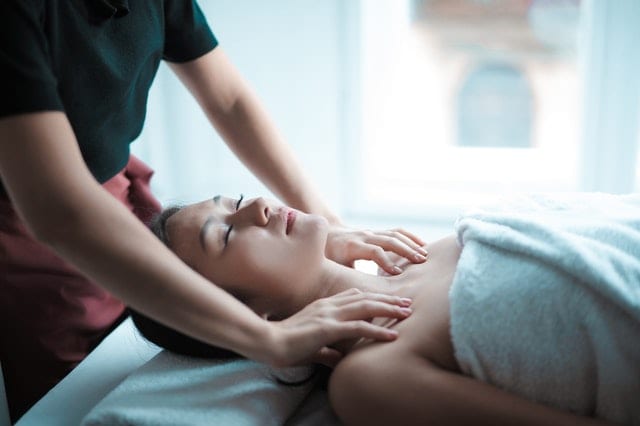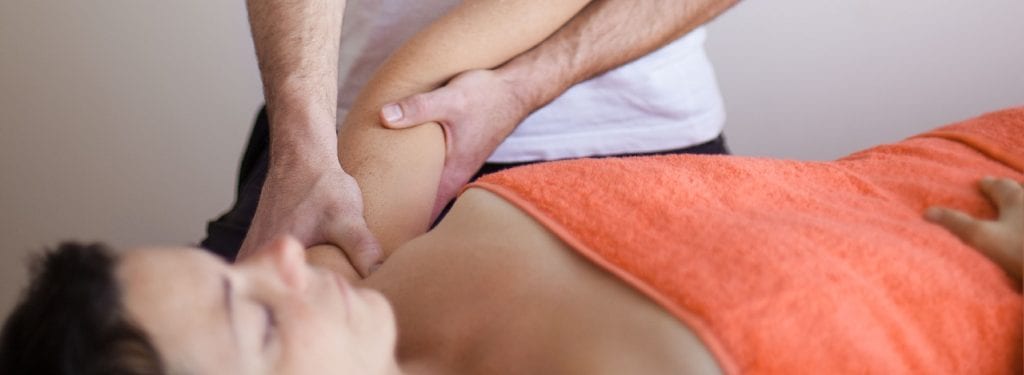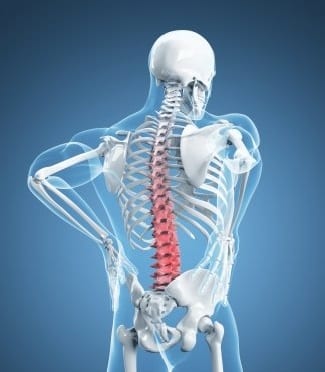The most important thing your massage therapist doesn’t know

Do you see a massage therapist for your sore shoulders?
If you do, there is every possibility they are making you feel worse, not better.
Let’s think about this for a moment. When you sit down in front of your massage therapist and tell them, “it hurts between my shoulder blades” or, “I carry all my tension in my shoulders,” what do they do?
Conventionally they might have a quick feel around, confirm for you that yes, your shoulders are tight, and immediately put you face-down on the treatment table for most of the session, releasing your posterior and upper shoulders.
You feel great… for a couple of days. And then the soreness comes back.
Yes?
If so, they are treating you all wrong.
Let me explain.
If you’re like most of us, you spend long periods in your day with your arms out in front of you – at a computer, driving a car, reading a book on public transport – your shoulders roll over forward, right? There’s an equal chance your head comes forward as you do any of these things, too.
So think about it for a moment: are the muscles across your shoulder blades long… or are they short?
Are the muscles along the back of you neck long, or are they short?
Now, next question: are the muscles of your upper chest long, or short? How about the muscles on the front of you neck?
If you answered long on the back, short on the front, congratulations! You now know more than the majority of practising massage therapists.
This isn’t a joke, though… this may be the source of your nagging, recurring muscle pain.
Flexion dysfunction
There is a condition called “flexion dysfunction,” and it is widely prevalent in the developed world.
If I put you face-down on the table for an hour and make those long muscles even longer, am I fixing the dysfunction, or feeding the dysfunction?
Feeding is the one and only correct answer!
Now, I’ll give you a moment to assimilate this idea… I know, crazy how much sense it makes, right?
If your arms are constantly out in front of you, and your head is constantly coming forwards, then your upper chest and front of neck muscles are short, tight, and constantly contracting.
The muscles of your upper back and neck, meanwhile, are long, weak, and neurologically inhibited. (For more background on this neurological inhibition, watch this video I made about it.) They are tight, yes, but only because they are fighting against the contracting muscles on the front. And a better word than tight is “taut” (more on that below).
This is exactly why I almost always start people face-UP on the table, on your back, so we can release the short tight pectoral, anterior deltoid and anterior neck muscles. Only after that do we turn you face-down to work on the long muscles, to bring them back to their proper resting length.

When you go face-down I bolster your arms and head to bring those long weak muscles back to neutral, where they are able to relax and unwind. We then massage them into that relaxed position.
Taut, not tight
Those long muscles often feel tight, but the better word is “taut” – stretched like a rubber band. That’s why they feel so sore: because they are struggling to compete with the power of the anterior muscles, from a weakened (mechanically disadvantaged) position. If they start off from a long position they have to try much harder when you call on them to do work – plus they are competing with the stronger muscles on the front. That’s why they spasm and cause pain.
Your massage therapist might help you for a few days, because they do relieve the tension – but because they are only treating the symptom the dysfunction remains, and you end up back where you started… and perhaps worse.
To resolve your posterior shoulder pain we first need to release your short front muscles, then relax your long back muscles. Lengthen the front to relax the back.
Finally, if your rhomboids and shoulder muscles are dysfunctional from being held in a lengthened position, would it be a good idea to stretch them?
NO!
You need to strengthen them to resolve the dysfunction. Stretching them might relieve the tension you feel for a while… but it will always come back – am I right?
Next time you see your massage therapist for shoulder pain, explain this concept to them so that they can treat you properly.
Alternatively, you can just come and see me. 😉





